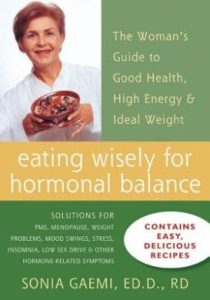The link between vitamin D and women’s bone density

Vitamin D, commonly referred to as the sunshine vitamin, plays a crucial role in maintaining overall health and well-being. This essential nutrient is known for its association with strong bones and teeth. However, in recent years, researchers have discovered a profound link between vitamin D and women’s bone density. In this article, we will explore the significance of vitamin D in maintaining healthy bones, its impact on women’s bone density, and how to ensure adequate vitamin D levels.
The Role of Vitamin D in Bone Health
Vitamin D is primarily responsible for the absorption and utilization of calcium and phosphorus in the body. These minerals are vital for the formation and maintenance of strong bones. Without sufficient levels of vitamin D, the body struggles to absorb calcium efficiently, leading to weakened bones and an increased risk of bone disorders such as osteoporosis.
Moreover, vitamin D is crucial in regulating parathyroid hormone (PTH) levels. PTH plays a key role in maintaining calcium homeostasis in the body. When there is insufficient vitamin D, the body produces excessive PTH, leading to calcium being extracted from the bones, further weakening them.
The Impact on Women’s Bone Density
As women age, they are particularly prone to experiencing a decline in bone density, making them more susceptible to osteoporosis and fractures. Studies have shown that women who have lower levels of vitamin D are at a higher risk of developing osteoporosis.
It is important to note that women have a higher risk of vitamin D deficiency due to various factors. Firstly, women tend to spend less time outdoors, exposing their skin to sunlight, which is required for vitamin D synthesis. Additionally, women often apply sunscreen, limiting the absorption of sunlight and, consequently, vitamin D production. Furthermore, women with darker skin tones have a higher melanin concentration, which reduces the ability of the skin to produce vitamin D naturally.
To make matters worse, women tend to experience hormonal changes during menopause that can exacerbate the problem. The decrease in estrogen levels during menopause can lead to a rapid decline in bone density. Combining this with inadequate vitamin D levels can significantly increase the risk of osteoporosis.
Ensuring Adequate Vitamin D Levels
Given the critical role that vitamin D plays in women’s bone health, it is crucial to ensure adequate vitamin D levels. Here are some strategies to ensure optimal vitamin D intake:
Sun Exposure
The easiest and most efficient way to obtain vitamin D is through sun exposure. Spending about 10-30 minutes in the sun every day can help the body produce an adequate amount of vitamin D. It is recommended to expose the arms and legs to sunlight without sunscreen before applying protection to avoid UV radiation damage.
Dietary Sources
While vitamin D can be challenging to obtain through diet alone, there are some food sources that contain this essential vitamin. Fatty fish like salmon and mackerel, fortified dairy products, eggs, and mushrooms are good dietary sources of vitamin D. Including these foods in your diet can contribute to maintaining optimal vitamin D levels.
Supplementation
In cases where sun exposure and dietary sources are insufficient, vitamin D supplements can be an effective solution. It is recommended to consult with a healthcare professional to determine the appropriate dosage and duration of supplementation.
Conclusion
Vitamin D is crucial for women’s bone health, and its deficiency can lead to weakened bone density and an increased risk of osteoporosis. By embracing sun exposure, incorporating vitamin D-rich foods in the diet, and considering supplementation when necessary, women can maintain optimal vitamin D levels and support healthy bones. Prioritizing vitamin D is a proactive step towards ensuring strong bones and overall well-being.
Remember to consult with a healthcare professional to understand your individual vitamin D needs and to receive personalized recommendations.





